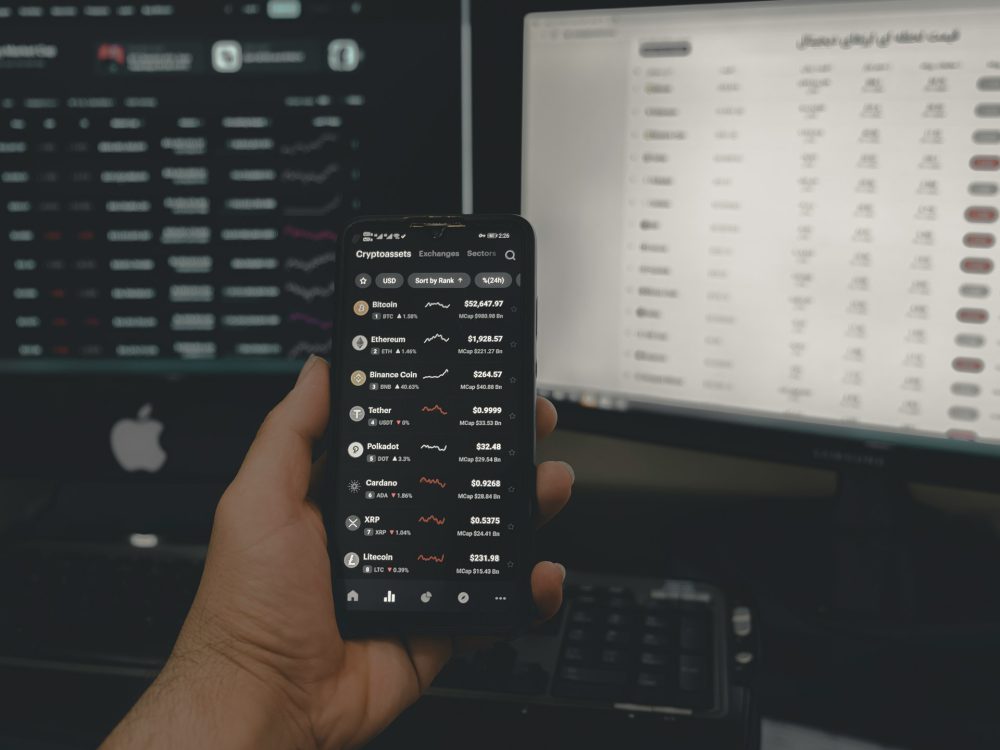Featured
Credimi Digital Assets and 30 Employees Move to Bank CF+
Credimi continued to lend to SMEs in the first half of the year, albeit only for a little more than €255 million, because compared to the first few months, activity had already been waning, until it collapsed. In July, only €8 million were intermediated and then with €2.34 million in August and €2.15 million in September, according to P2P Market Data, for a total in the nine months of 2022 then of only €267.7 million.

It’s official now. The business unit of fintech scaleup Credimi containing digital assets and some 30 employees will pass to Banca CF+, the former Credito Fondiario, which signed the agreement on Thursday, March 23rd, as announced yesterday by CEO Iacopo De Francisco to Corriere della Sera.
“We have reached the signing of the agreement with the fintech Credimi for the acquisition of a business unit consisting of about 30 highly specialized resources and all the technological assets of the company. We are very pleased with this transaction, thanks to which Banca CF+ structurally strengthens its presence in the world of secured finance and integrates internally with the leading operator in Italy in the field of digital lending to small and medium-sized enterprises. We expect to reach the closing of the transaction by the summer and full operation by the end of the year,” de Francisco told Corriere.
According to BeBeez, the business unit will change hands for €5.5 million with an earn-out of €3.5 million, upon the achievement of certain objectives, thus at a price slightly lower than the one circulating in recent days. As for Credimi, it will go into liquidation, while it will continue independently the activity of the securitization spvs that acquired the receivables from the SMEs financed by the platform and that in turn financed themselves by issuing asset-backed notes underwritten by third-party investors, as well as, for a small share, by Credimi itself. In any case, again according to what BeBeez understands, Banca CF+ will not take over either the servicing of those credits or as investors.
The fintech scaleup specializing in financing for SMEs and microenterprises, a financial intermediary under Article 106 of the Consolidated Banking Act, had intermediated more than €2.2 billion since it began operations in 2016 and until the end of last September, leading the company to be one of the leading fintech lending platforms in Europe.
Read more on the subject and find the latest financial news of the day with the Born2Invest mobile app.
Credimi had in turn raised capital from various investors, who will now therefore only get back a small portion of their investment
The first round dates back to 2015, when Ignazio Rocco di Torrepadula, a majority partner along with his team of managers, founded the startup in Milan, which at the time was called Insta Partners. By the end of that year, a group of Italian entrepreneurs, including Nerio Alessandri, Alessandro and Mauro Benetton, Lorenzo Pellicioli, Massimo Tosato, and Dante Roscini, had invested more than €8 million.
Then in 2018 United Ventures and Vertis entered with €10 million. The last raising was just over a year ago, when United Ventures and Vertis invested €5.6 million in what was to be a bridge round together with Merloni Holding. Other institutional partners include Banca Sella, Deutsche Bank and Tikehau Capital, for which Rocco di Torrepadula, a former manager at The Boston Consulting Group, was senior advisor, who had participated over the years in the various structured credit securitizations by Credimi and had sealed the partnership by also investing a chip in the capital. This was all with a view to a further round that was instead to be in the range of €80-€100 million, with which the scaleup aimed to involve international venture capital funds as well.
Necessary also because the business in the meantime has gradually absorbed the capital raised in previous rounds, generating net losses that have been covered with existing reserves. In fact, as stated in the Report on Operations for the 2021 Budget, compared to increasing net interest and other banking income to €10.8 million in 2021 from €8.1 million in 2020 and €2.7 million in 2019, there was a net loss of €7.6 million in 2021, after €4.15 million in 2020 and €7.07 million in 2019, and at the same time gross borrowings rose to €31.5 million in 2021 from €13.6 million in 2020 and €21.5 million in 2019. All this, it is pointed out, despite the fact that in 2021 interest and commission margins grew by 40 percent in total, exceeding €15 million.
Also, the latest capital increase had become necessary to allow Credimi to continue to comply with banking supervisory rules, given the continued development of the business. As is well known, in fact, financial intermediaries registered with Bankitalia on the basis of Article 106 of the Consolidated Banking Act, as is precisely the case with Credimi, must comply with precise capital ratios related to total loans disbursed. The idea was then precisely to structure capital in a far more important way, given further growth plans.
And this, because Credimi’s business model, as the Report on Operations for the 2021 Annual Report also states, entails that the company finds itself “managing for very short cycles disbursements with its own liquid assets before receding eligible positions to the securitization vehicles Lumen spv and Perseveranza spa.” For this Credimi “has equipped itself with a number of credit lines taken out with leading banking institutions to cope with any short overdraft periods. In addition, in order to finance the notes of the securitizations with respect to which Credimi holds a stake, the company has taken out special financing lines.”
The new round operation, however, turned out to be more complicated than expected, and in the meantime, it has become increasingly difficult to finance and thus provide credit to SMEs through the platform. The scaleup was therefore no longer able to generate the margins and commissions that are its only source of revenue in the face of a rigid cost structure of about 800 thousand euros per month for the headquarters and management of the technology platform. A situation that has thus generated a liquidity crisis.
This is why Rocco di Torrepadula at the end of last November, during Fintech Future 2022, the annual event of Assofintech, the Italian association for fintech and insurtech, had publicly explained that he needed a banking partner in order to continue working. “We first have to solve a problem that is our collection model. We collect today through securitizations, this is clearly a bottleneck, it limits us a lot, so we need to have either our own bank collection, for which we need a license, or we need to agree or do a partnership with a bank to have bank collection that would allow us to do about twice the volumes and about three times the contribution that we have today,” he had said at the time.
Financing then became increasingly difficult over the past year
The difficulty, however, had already emerged in the previous fiscal year. Again in the Report to the Financial Statements, in fact, it is stated that the main element that negatively impacted performance in 2021 was “the low ability on the part of the company to transform the financing requests received, amounting to approximately 7 billion euros, into customers, this fact was mainly dictated by restrictions in terms of eligibility and pricing criteria in the scope of the securitization transactions in place during the year.” For this reason, management had set out again to “negotiate funding operations with less friction in terms of eligibility criteria for loans in the perimeter” and that allowed “application of better prices” and that “were more remunerative, thanks to the track record and standing built by the company.”
A policy that in the first two months of 2022 was working, as a “marked improvement was seen in terms of volumes disbursed and profitability, a trend that had already begun in the last months of 2021. In particular, it should be noted that the average monthly volumes of medium- to long-term loans disbursed in the first two months of 2022 amounted to €44.4 million, while the average for the 2021 fiscal year was €32.8 million. Likewise, the average revenue yield on these loans, net of brokerage fees, rose from a 2021 average of 2.95 percent to 3.94 percent in the first two months of 2022, ensuring income balance for the latter period.”
Indeed, in the first part of last year, Credimi secured new funding by structuring two new securitizations. The first was announced last March, for a total of €100 million, as an extension of the Perseverance program, an extension initially announced for €150 million, with the senior notes being underwritten by Duomo Funding, Banco BPM and Intesa Sanpaolo and the juniors and mezzanines by Golden Tree, as well as by Credimi itself. The Perseverance program had kicked off in April 2021, with an initial issuance of €200 million partly-paid abs. The second transaction was then announced in June, for an amount of €26.6 million, and underwritten for €25 million by Mediocredito Centrale and €1.6 million by Credimi itself.
Meanwhile, the platform continued to lend to SMEs in the first half of the year, albeit only for a little more than €255 million, because compared to the first few months, activity had already been waning, until it collapsed in July with only €8 million intermediated and then with €2.34 million in August and €2.15 million in September, according to P2P Market Data, for a total in the nine months of 2022 then of only €267.7 million, when in all of 2021, on the other hand, as much as €434 million had been disbursed, with a growth in business loans of 32.8 percent, for a total of almost 50 thousand loan applications received, and in 2020 as much as €660 million (of which 295 million were medium- to long-term loans and the rest factoring, an activity that Credimi later decided to abandon because it was unprofitable). After that, as of October, Credimi no longer reported its statistics to P2P Market.
__
(Featured image by Mathieu Stern via Unsplash)
DISCLAIMER: This article was written by a third party contributor and does not reflect the opinion of Born2Invest, its management, staff or its associates. Please review our disclaimer for more information.
This article may include forward-looking statements. These forward-looking statements generally are identified by the words “believe,” “project,” “estimate,” “become,” “plan,” “will,” and similar expressions. These forward-looking statements involve known and unknown risks as well as uncertainties, including those discussed in the following cautionary statements and elsewhere in this article and on this site. Although the Company may believe that its expectations are based on reasonable assumptions, the actual results that the Company may achieve may differ materially from any forward-looking statements, which reflect the opinions of the management of the Company only as of the date hereof. Additionally, please make sure to read these important disclosures.
First published in Be Beez, a third-party contributor translated and adapted the article from the original. In case of discrepancy, the original will prevail.
Although we made reasonable efforts to provide accurate translations, some parts may be incorrect. Born2Invest assumes no responsibility for errors, omissions or ambiguities in the translations provided on this website. Any person or entity relying on translated content does so at their own risk. Born2Invest is not responsible for losses caused by such reliance on the accuracy or reliability of translated information. If you wish to report an error or inaccuracy in the translation, we encourage you to contact us.

-

 Business2 weeks ago
Business2 weeks agoDow Jones Nears New High as Historic Signals Flash Caution
-

 Cannabis3 days ago
Cannabis3 days agoSwitzerland Advances Cannabis Legalization with Public Health Focus
-

 Crypto2 weeks ago
Crypto2 weeks agoBitcoin Surges Toward $110K Amid Trade News and Solana ETF Boost
-

 Fintech6 days ago
Fintech6 days agoRipple and Mercado Bitcoin Expand RWA Tokenization on XRPL

























